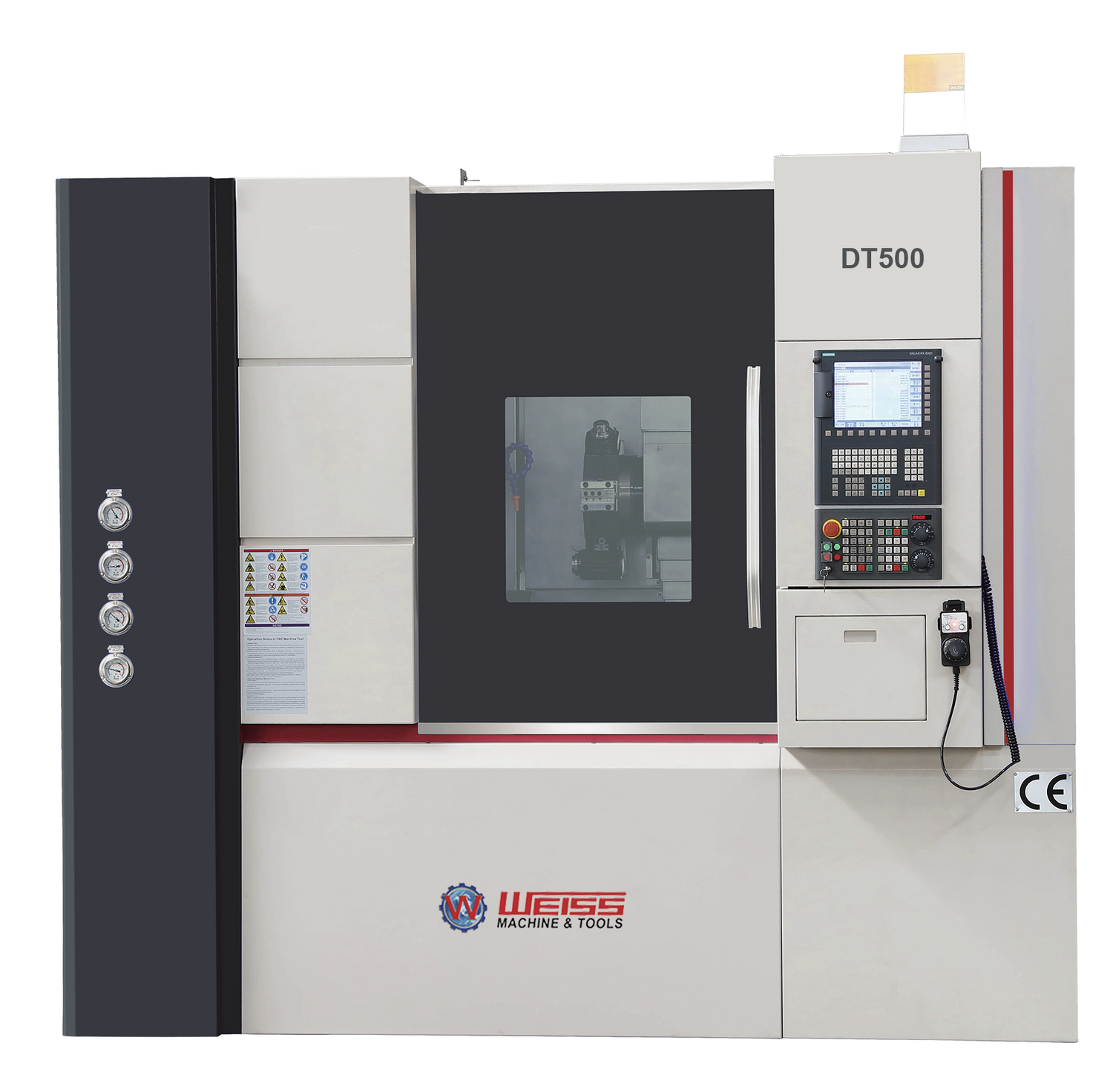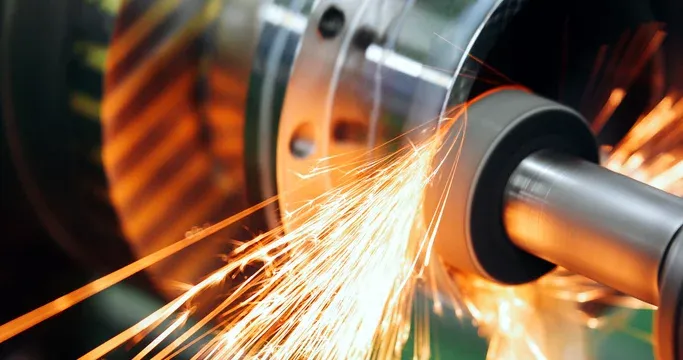
Get A Quote
What is the Basic Principle of CNC Turning Process?
In the world of modern manufacturing, CNC (Computer Numerical Control) turning plays a pivotal role in producing precision parts and components. Whether you're a seasoned machinist or new to the field, understanding the basics of CNC turning and CNC turning center basics is essential. In this article, we will dive into the fundamental principles of CNC turning, explain how the process works, and explore the importance of CNC turning centers in modern manufacturing. By the end, you'll have a clear understanding of CNC turning explained and why it’s a cornerstone in precision machining.
What is CNC Turning?
At its core, CNC turning is a machining process where a workpiece is rotated while a cutting tool removes material to create the desired shape. This process is automated through a CNC turning center, which is controlled by pre-programmed computer software. The precision and automation of CNC turning make it ideal for creating cylindrical or symmetrical parts with tight tolerances.
How Does the CNC Turning Process Work?
To fully grasp CNC turning explained, it’s essential to understand the steps involved in the process. Here’s a breakdown of how CNC turning works:
1. Workpiece Loading
The process begins by loading the raw material, known as a workpiece, into the CNC turning center. The workpiece is typically cylindrical and is clamped into place on a spindle.
2. Spindle Rotation
Once secured, the spindle rotates the workpiece at high speeds. The rotation speed depends on the material being machined and the specific requirements of the part.
3. Cutting Tool Movement
As the workpiece spins, the cutting tool moves along precise axes (usually X and Z axes). This controlled movement allows the tool to remove material from the workpiece, shaping it into the desired geometry. The cutting tool can perform various operations, such as facing, grooving, and threading.
4. Material Removal
During the cutting process, the tool gradually removes material from the workpiece, creating chips. These chips are removed from the cutting area, allowing for continuous operation without obstruction.
5. Final Part
Once the material is removed to the required dimensions, the workpiece is finished. The final part is then removed from the CNC turning center, often requiring little to no post-processing.
What is a CNC Turning Center?
A CNC turning center is a high-tech machine tool used to perform CNC turning operations. Unlike manual lathes, which require a skilled operator to manually control the cutting tool, CNC turning centers are fully automated. They use sophisticated software and motors to precisely control the movement of the cutting tool and the rotation of the workpiece.
Key Features of a CNC Turning Center:
- Automatic Tool Changer: CNC turning centers often come equipped with an automatic tool changer, allowing the machine to switch between different cutting tools without manual intervention.
- Multi-Axis Control: Most CNC turning centers can operate on multiple axes (typically two or more), enabling complex and precise cuts from various angles.
- High Precision: The use of computer control allows for extremely high precision, making CNC turning ideal for parts that require tight tolerances and intricate geometries.
CNC Turning and CNC Turning Center Basics
To understand CNC turning and CNC turning center basics, let’s explore the essential components and features that make these machines so effective:
1. CNC Control Unit
The CNC control unit is the brain of the machine. It is responsible for executing pre-programmed instructions to control the movement of the spindle and cutting tool. The control unit ensures that each cut is made with pinpoint accuracy, reducing the need for manual adjustments.
2. Cutting Tools
CNC turning centers use a variety of cutting tools, each designed for specific machining operations. These tools include turning inserts, drills, and threading tools, allowing the machine to perform multiple operations in one setup.
3. Spindle
The spindle is responsible for holding and rotating the workpiece. The spindle speed can be adjusted depending on the material and the desired finish, making it a crucial component in achieving high-quality parts.
4. Tailstock
In CNC turning, the tailstock is used to support longer workpieces during machining. This prevents deflection and ensures that the workpiece remains securely in place, even during high-speed operations.
5. Chip Management
During the turning process, material is removed from the workpiece in the form of chips. CNC turning centers are equipped with chip management systems that efficiently remove these chips from the cutting area to prevent interference with the machining process.
What Are the Applications of CNC Turning?
The versatility and precision of CNC turning make it suitable for a wide range of applications across various industries. Whether it's aerospace, automotive, or medical devices, CNC turning plays a critical role in manufacturing high-quality parts. Here are some common applications:
- Automotive Industry: CNC turning is used to create components like shafts, gears, and engine parts, all of which require tight tolerances and high durability.
- Aerospace Industry: Aircraft components such as turbine blades and landing gear parts are often manufactured using CNC turning due to their complexity and precision requirements.
- Medical Devices: The medical industry relies on CNC turning to produce surgical instruments, prosthetics, and implants that demand high precision and fine finishes.
Why CNC Turning is Vital in Modern Manufacturing
Now that we’ve covered CNC turning explained, it’s important to understand why this process is critical in modern manufacturing. CNC turning offers several advantages over traditional manual turning methods, making it the go-to solution for producing high-quality parts efficiently.
1. Precision and Accuracy
CNC turning centers are incredibly accurate, capable of maintaining tight tolerances with minimal variation. This level of precision is essential for industries where even the smallest errors can lead to significant problems.
2. High Efficiency
With the use of automation and advanced control systems, CNC turning can be performed at high speeds, significantly reducing production time. Additionally, the ability to automate tool changes further increases the machine’s efficiency.
3. Consistency
One of the biggest advantages of CNC turning is the consistency it offers. Once a program is set up, the machine can repeatedly produce identical parts without any deviation, ensuring quality across large production runs.
4. Cost-Effective Production
Although CNC turning centers require an initial investment, their efficiency, precision, and reduced waste make them cost-effective in the long run. The automation of the process also reduces the need for manual labor, further lowering production costs.
How to Choose the Right CNC Turning Center
Selecting the right CNC turning center for your operation depends on several factors. Here are some considerations to keep in mind:
1. Material Types
Different CNC turning centers are designed to handle different materials, such as metals, plastics, or composites. Ensure that the machine you choose is compatible with the materials you work with.
2. Production Volume
If your operation requires high-volume production, you’ll need a CNC turning center that can handle continuous operation without frequent downtime for maintenance or tool changes.
3. Complexity of Parts
For complex parts that require multiple operations, consider a CNC turning center with multi-axis capabilities. This will allow you to perform various machining operations in one setup, reducing the need for additional machines or setups.
Conclusion: Achieve Precision and Efficiency with WEISS Machine
In conclusion, understanding the basic principles of CNC turning is essential for any manufacturing process requiring precision and efficiency. Whether you're working with complex geometries or simple cylindrical parts, the ability to produce highly accurate components through CNC turning offers significant advantages in productivity and consistency.
At WEISS Machine, we specialize in providing advanced CNC turning centers that meet the demands of modern machining. Our equipment is engineered for precision, speed, and ease of use, making CNC turning explained simple and accessible for all levels of expertise. Whether you are an industry professional or just getting started, WEISS Machine offers the perfect solution to optimize your production. Explore our range of CNC machines today and take your manufacturing capabilities to the next level!


